Samsung Galaxy Buds 2 vs Galaxy Buds: what’s new with Samsung’s entry-level wireless earbuds?
Should you upgrade your original Galaxy Buds?
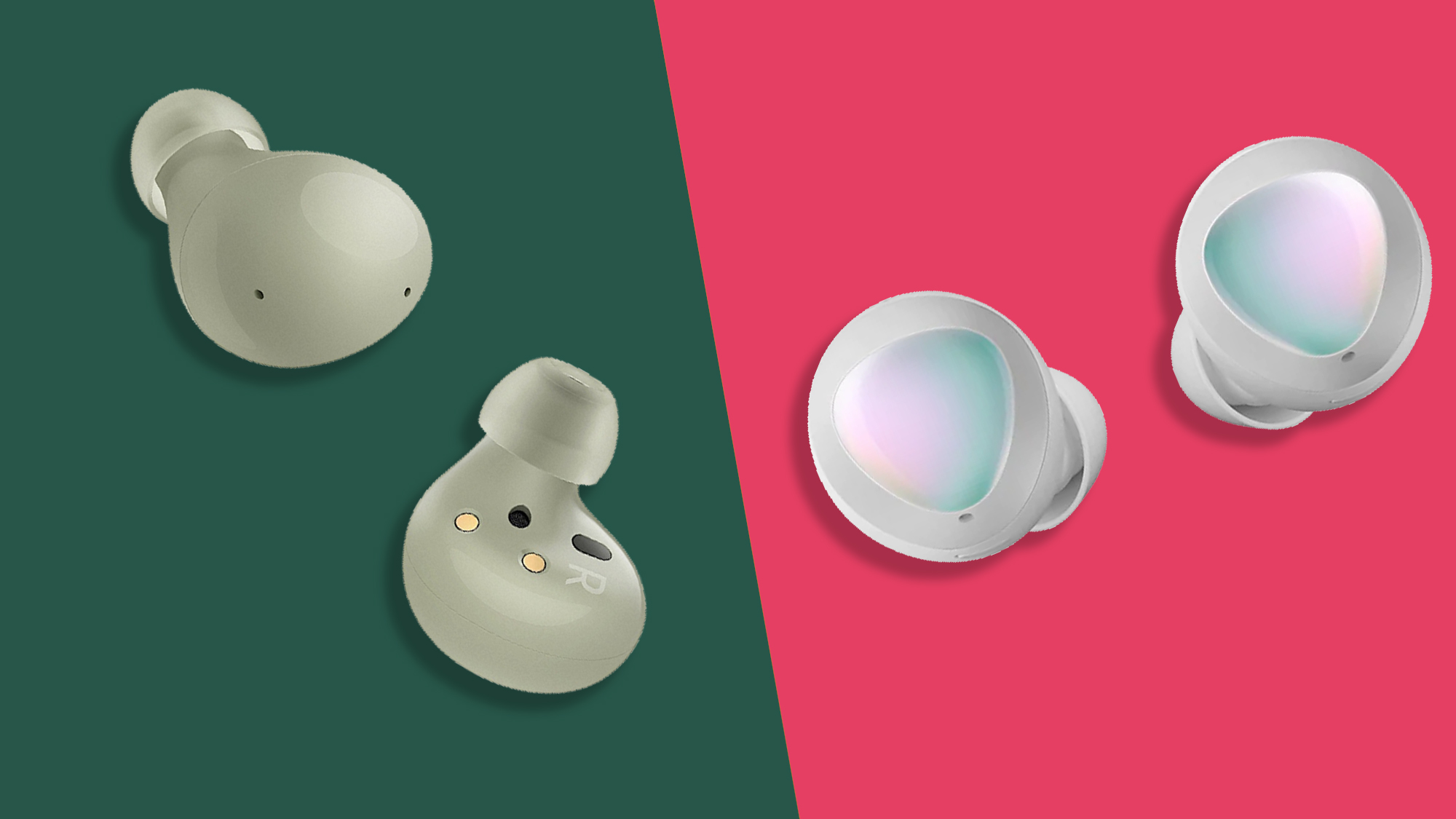
Samsung seems to release a new pair of true wireless earbuds more frequently than any of the other big tech companies – and its latest pair, the Galaxy Buds 2, are the follow-up to the first model in its Galaxy range of wireless earbuds.
Picking up where the original Samsung Galaxy Buds left off, the Galaxy Buds 2 are an entry-level pair of in-ear headphones that come with active noise cancellation, improved audio, and a stylish design.
In spite of those improvements, they’re no more expensive than their predecessors, making them an attractive option for anyone who wants to take a chance on Samsung’s AirPods rivals.
If you’re wondering whether to upgrade from the original Galaxy Buds or thinking of swapping your regular in-ear headphones for a pair of noise-cancelling earbuds, here’s everything you need to know about Samsung’s latest model and how they compare to their predecessors.
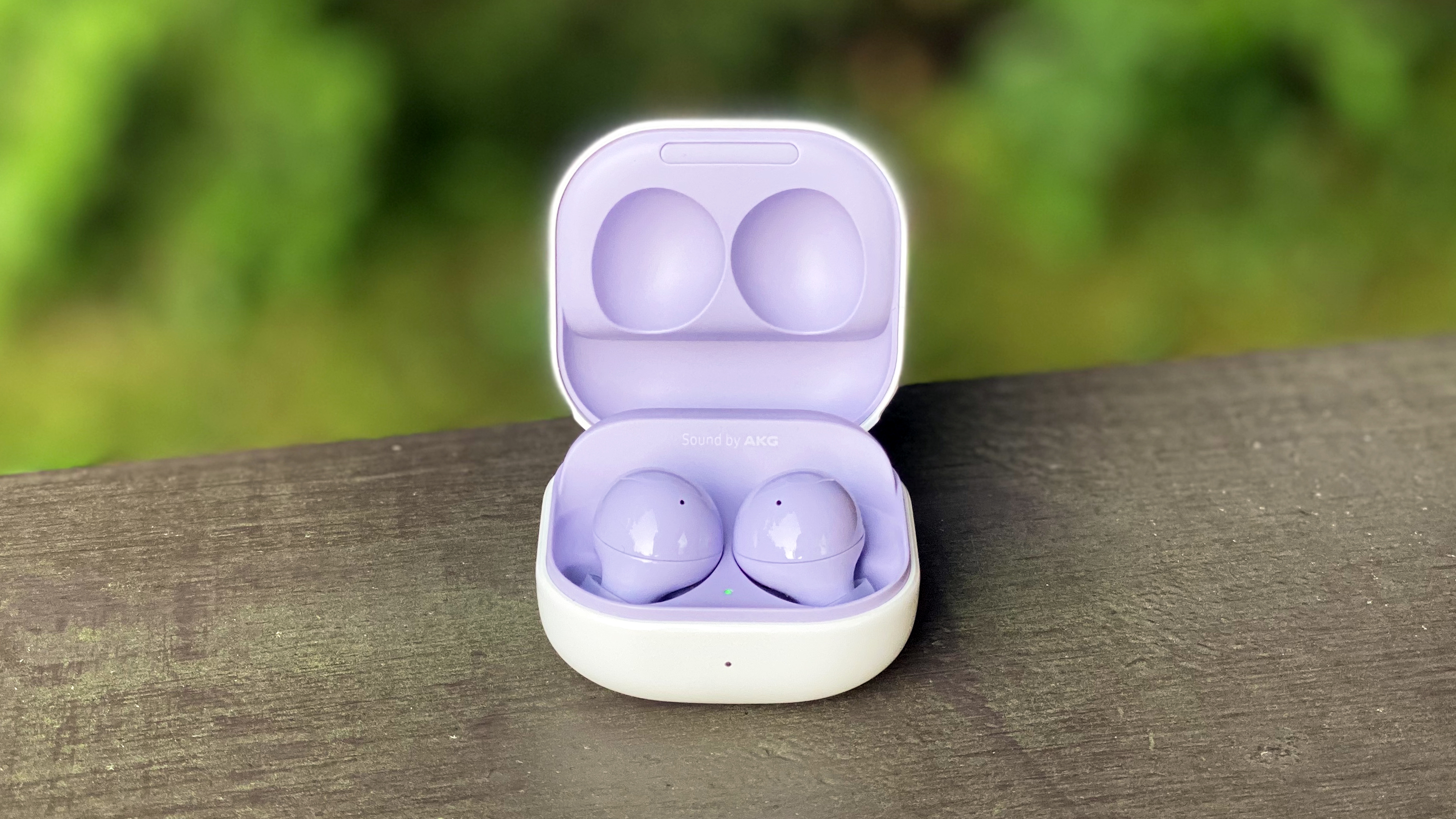
Samsung Galaxy Buds 2 vs Galaxy Buds: price and availability
The Samsung Galaxy Buds 2 are available to buy for $149.99 / £139.99 / AU$219. They cost as much as the original Samsung Galaxy Buds did when they launched back in 2019 (except for Australia, where the new Buds are considerably cheaper).
Now that they’ve been usurped by a newer model, you can find the original Galaxy Buds for much less than their RRP. In fact, we’ve seen prices drop as low as $80 / £65 / AU$120 recently, and you can bet they’ll drop lower over Black Friday and Cyber Monday.
Saying that, we doubt Samsung will continue to make the older Galaxy Buds. So, if you want to snap up the originals with a steep discount, you’ll probably need to act quickly.
Get daily insight, inspiration and deals in your inbox
Sign up for breaking news, reviews, opinion, top tech deals, and more.
Design
Samsung has made a few design changes when it comes to the newer Galaxy Buds 2; the company has done away with the triangular housings seen on the original Galaxy Buds, in favor of a smoother, pebble-like shape.
According to Samsung, the new Galaxy Buds 2 are 15% smaller and 20% lighter than their predecessors, and that makes them easier to wear for long periods of time. The downside of them being a bit smaller is that they’re a little harder to handle and can slip out of their case and your ears more easily.
The color options you get are different, too. The Galaxy Buds 2 come in Lavender, Olive, White, and Graphite. However, it’s worth noting that the Buds themselves and the inside of the case will have a distinctive color but the outside of the case won’t – it will always be white.
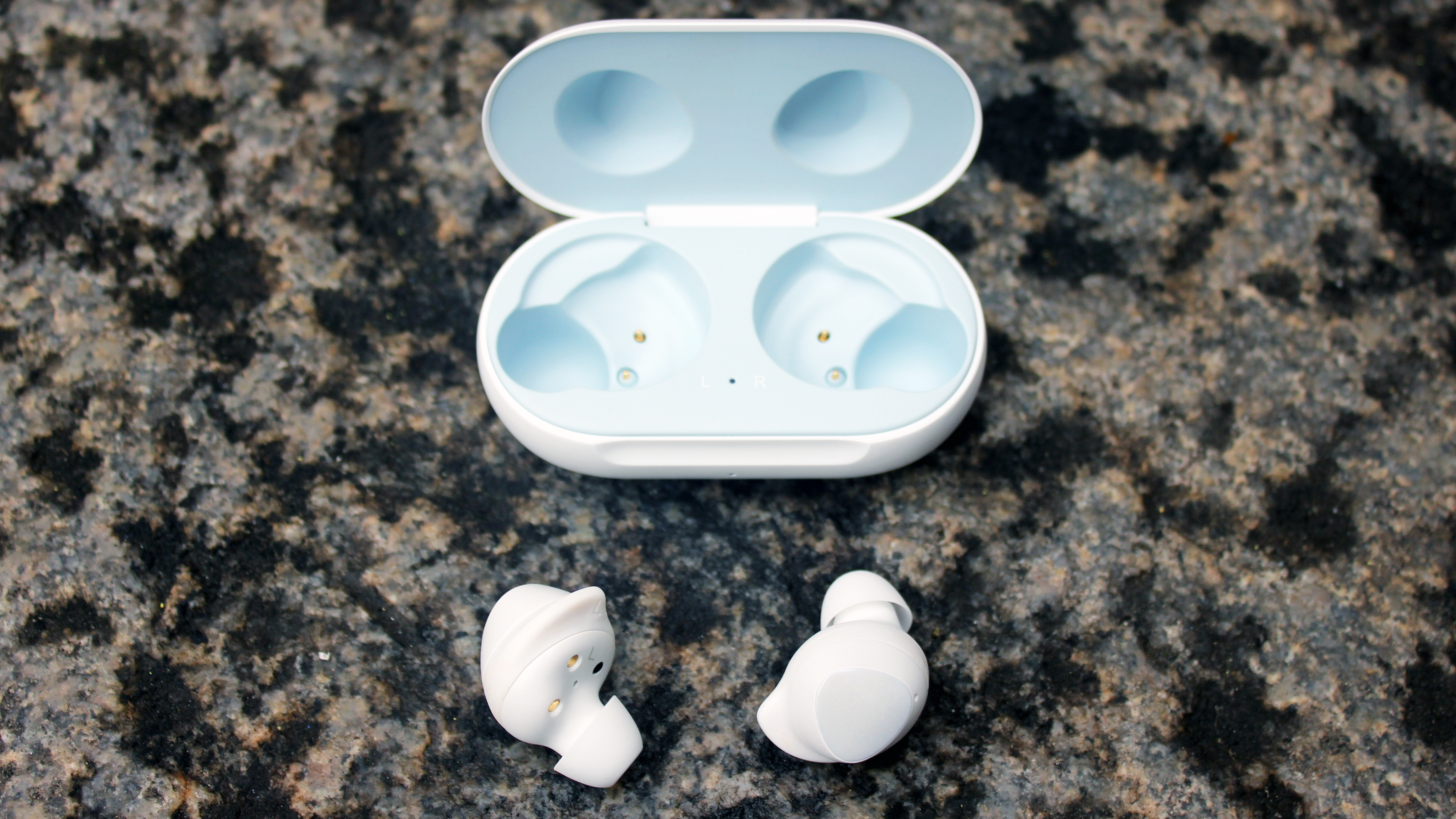
Meanwhile, the original Galaxy Buds are available in black, yellow, and a pearlescent white color. We think the muted color options for the newer Galaxy Buds are a little more stylish, but that’s a matter of personal preference.
Both models come with touch sensitive controls, though we think Samsung’s refined this feature over the years, resulting in the Galaxy Buds 2 being more responsive and registered our touch more accurately.
They also both come with a range of silicone eartips in the box, so you should be able to find a comfortable fit – the original Galaxy Buds also came with small earfins to keep them securely in your ears, but Samsung has since done away with that feature.
Disappointingly, Samsung hasn’t improved the water resistance of the Galaxy Buds. Both models come with an IPX2 rating, but that won’t protect your buds from much more than a little sweat or very light rain.
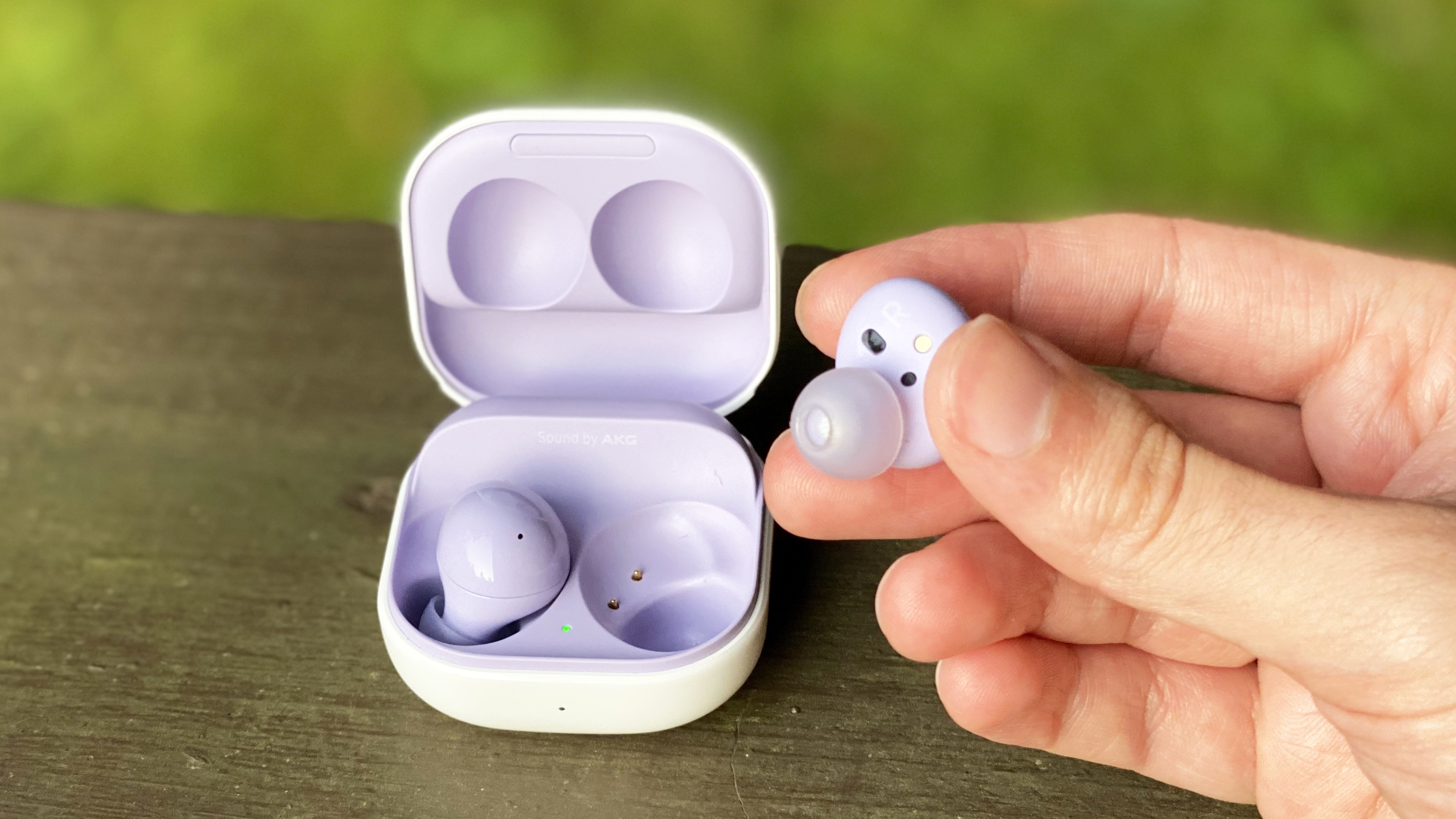
Audio performance
Thankfully, Samsung has made some improvements to the audio performance of its entry-level wireless earbuds.
While the original Galaxy Buds featured one dynamic driver, the Galaxy Buds 2 come with a separate tweeter and a woofer, which has given them a wider, clearer soundstage than their predecessors.
The way the Galaxy Buds 2 have been tuned means that the bass, mids, and highs sound really powerful – although you don’t get the sub-bass or the very highest frequencies, so don’t expect chest-thumping bass or exquisite detail.
Still, they sound much better than the original Galaxy Buds, which we found to be a little unbalanced, with recessed mids compared to the very prominent bass. (We should note that we didn’t hate the sound of the Galaxy Buds – we just didn’t love it, either.)
Both models support SBC and AAC codecs, as well as Samsung’s proprietary Scalable Codec if you’re connected to a Samsung device. The latter enables noticeably improved audio quality over the basic SBC codec and makes either model a solid pick for Galaxy phone owners – for everyone else, you’re stuck with fairly lossy codecs.
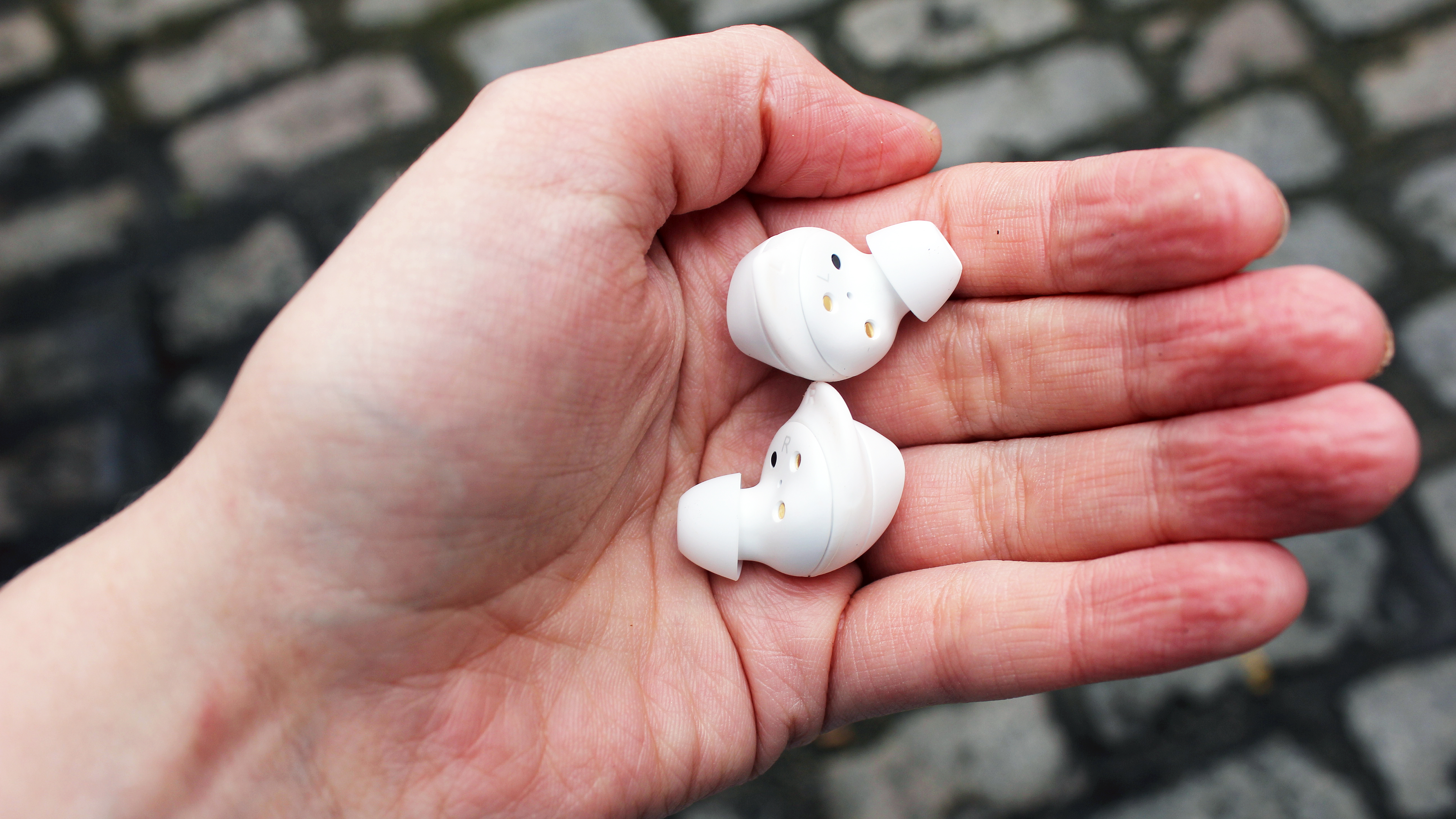
Noise cancellation
If you want your wireless earbuds to come with active noise cancellation, the Samsung Galaxy Buds 2 are an easy choice – the original Galaxy Buds don’t support this feature at all.
However, the noise cancellation provided by the Buds 2 isn’t the best on the market, even if we are pleased to see it come with Samsung’s entry-level earbuds.
With music playing and ANC turned on, you probably won’t be able to hear someone talking to you in the same room, but you’d hear any loud noise coming from outside your home. Overall, the Samsung Galaxy Buds 2 are fine to use if you want to tune out background office noise, but we wouldn’t recommend them for long flights or particularly busy job sites.
If you want to tap into your surroundings, you can hold either earbud’s touch-sensitive housing to switch to the ambient mode, which will pump environmental noise into the buds – handy if you want to quickly order a coffee without taking your buds out.

Battery life and app
The Samsung Galaxy Buds 2 come with a 29-hour combined battery life if you use them with the active noise cancellation turned off. Turn this on, and you’re looking at 20 hours – that’s five hours from the earbuds themselves with a further 15 provided by the charging case.
That’s not a class-leading battery life by any means (wireless earbuds like the Cambridge Audio Melomania 1 Plus offer double that amount), but it’s much better than the original Galaxy Buds, which offered a measly 13 hours of playback.
Both models support wireless charging, as well as the ability to top up their charging cases via their USB-C ports.
They’re also both controllable via the Galaxy Wearable app, where you can adjust the EQ settings, customize the touch controls, and see how much battery life your buds have left. The app can also help you locate your lost buds, and if you have the Galaxy Buds 2, you can carry out a test to make sure your buds fit your ears correctly.
Disappointingly, many of these features are only available on the Android version of the app. The iOS version hasn’t been updated yet and that means customization is impossible until it receives an update.
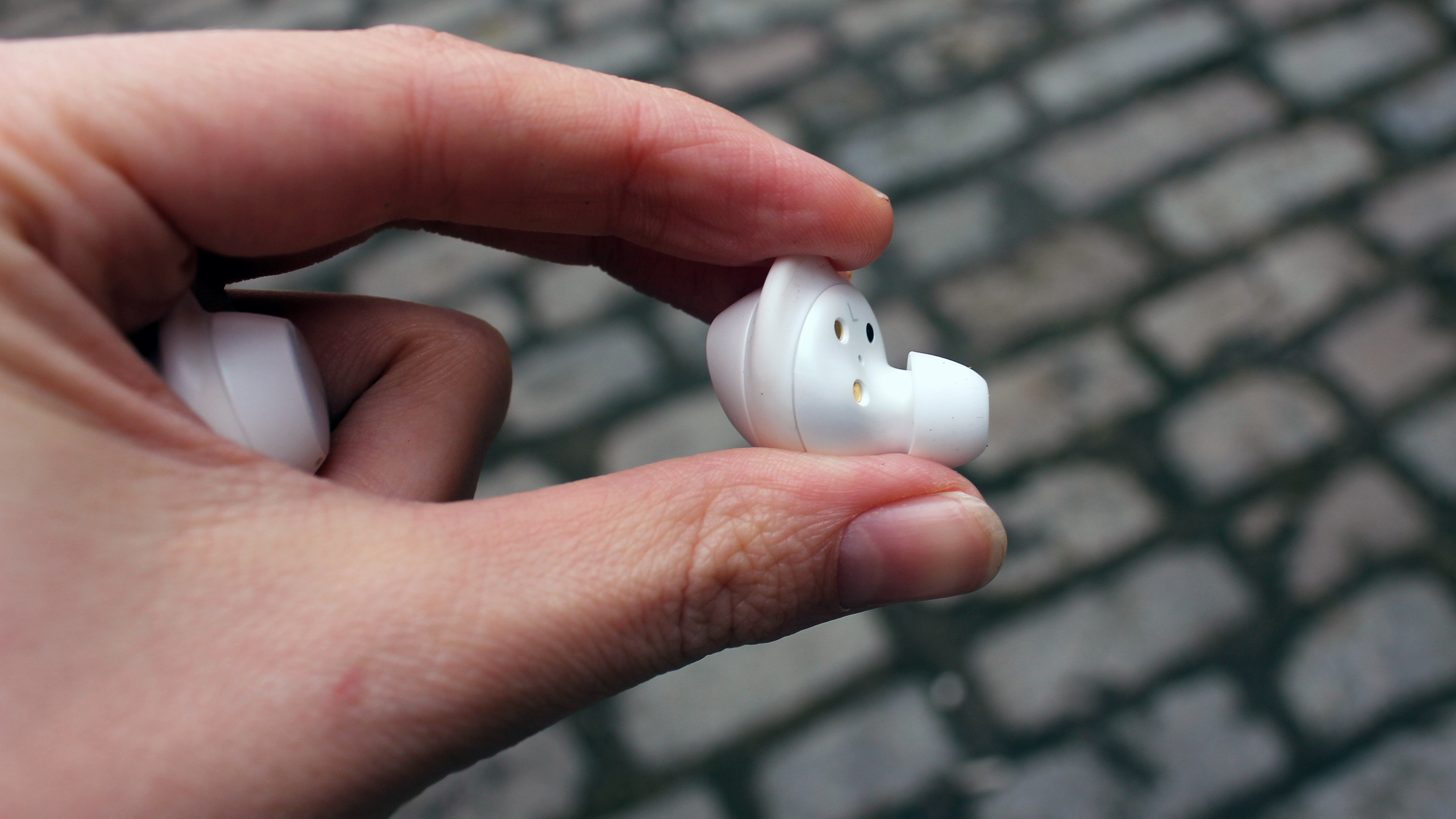
Takeaway
The Samsung Galaxy Buds 2 are better than their predecessors in pretty much every way. They sound better, come with a longer battery life, look more stylish, and boast active noise cancellation – a feature you don’t always find in entry-level wireless earbuds.
If you have the original Galaxy Buds and are thinking of upgrading, we’d definitely recommend switching to the Galaxy Buds 2.
However, there is one instance we’d recommend buying the older Galaxy Buds – and that’s if you can find them with a really big discount. We’ve already seen some great Galaxy Buds deals in recent weeks, and prices are likely to drop even further over Black Friday in November.
Still, you’d be getting a fairly outdated pair of earbuds, and there are plenty of brilliant budget earbuds out there that’ll get your more for your money – check out the Lypertek PurePlay Z3 2.0 or the EarFun Air Pro if you want to keep costs down without sacrificing audio quality.
- Read our full Samsung Galaxy Buds 2 review
Olivia was previously TechRadar's Senior Editor - Home Entertainment, covering everything from headphones to TVs. Based in London, she's a popular music graduate who worked in the music industry before finding her calling in journalism. She's previously been interviewed on BBC Radio 5 Live on the subject of multi-room audio, chaired panel discussions on diversity in music festival lineups, and her bylines include T3, Stereoboard, What to Watch, Top Ten Reviews, Creative Bloq, and Croco Magazine. Olivia now has a career in PR.
